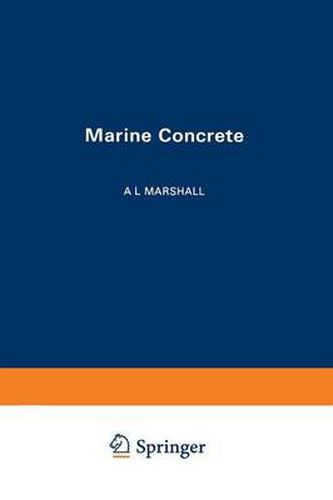Readings Newsletter
Become a Readings Member to make your shopping experience even easier.
Sign in or sign up for free!
You’re not far away from qualifying for FREE standard shipping within Australia
You’ve qualified for FREE standard shipping within Australia
The cart is loading…






This title is printed to order. This book may have been self-published. If so, we cannot guarantee the quality of the content. In the main most books will have gone through the editing process however some may not. We therefore suggest that you be aware of this before ordering this book. If in doubt check either the author or publisher’s details as we are unable to accept any returns unless they are faulty. Please contact us if you have any questions.
Concrete is commonly regarded as a mundane, prosaic material whilst the sea is perceived as a fearsome environment, endowed with mystery. Mystery stems from lack of knowledge, and to that extent both concrete and sea have something in common-we fall a long way short of knowing enough about them. Fortunately we have learned enough from our investigations and experiences to be able to set the limits within which we should operate. It is important for the engineer to seek to quantify the effects of the environment on materials and structures so that these can be made safe and adequately durable for their intended economic life. This is especially true for marine structures. Thus the primary purpose of this book is to provide a useful synthesis of the behaviour of concrete and concrete structures in the marine environment. An outline of the content of the book is provided in the latter part of the first chapter and so will not be anticipated here. The chief aim throughout, however, is to work as far as possible within a context of the appropriate governing physical phenomena, giving due consideration to the mathematical relationships between them. Moreover, without intending to be a design manual, an introduction is given to the sources of information which designers are likely to use, as well as to structural achievements. It is hoped that there should emerge an implicit integration between structure and constituent materials and the surrounding environment.
$9.00 standard shipping within Australia
FREE standard shipping within Australia for orders over $100.00
Express & International shipping calculated at checkout
This title is printed to order. This book may have been self-published. If so, we cannot guarantee the quality of the content. In the main most books will have gone through the editing process however some may not. We therefore suggest that you be aware of this before ordering this book. If in doubt check either the author or publisher’s details as we are unable to accept any returns unless they are faulty. Please contact us if you have any questions.
Concrete is commonly regarded as a mundane, prosaic material whilst the sea is perceived as a fearsome environment, endowed with mystery. Mystery stems from lack of knowledge, and to that extent both concrete and sea have something in common-we fall a long way short of knowing enough about them. Fortunately we have learned enough from our investigations and experiences to be able to set the limits within which we should operate. It is important for the engineer to seek to quantify the effects of the environment on materials and structures so that these can be made safe and adequately durable for their intended economic life. This is especially true for marine structures. Thus the primary purpose of this book is to provide a useful synthesis of the behaviour of concrete and concrete structures in the marine environment. An outline of the content of the book is provided in the latter part of the first chapter and so will not be anticipated here. The chief aim throughout, however, is to work as far as possible within a context of the appropriate governing physical phenomena, giving due consideration to the mathematical relationships between them. Moreover, without intending to be a design manual, an introduction is given to the sources of information which designers are likely to use, as well as to structural achievements. It is hoped that there should emerge an implicit integration between structure and constituent materials and the surrounding environment.